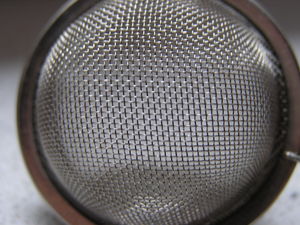Many recipes call for sifted flour, and, as a result, cooks run out to the nearest grocery stores or the nearest gourmet gear stores and they grab the first flour sifter that they can come by to fill the gap. But what is it that we are looking for in a sifter? And why do we need one in the first place? Here are a few points to consider before you replace the one you inherited from Grandma.
Why do we sift? – We sift flour so the distribution of the flour is more even than it is when it comes out of the bag.
1. To get the most accurate measurement of flour. Professional bakeries use scales to weigh ingredients because packaged flour is notoriously uneven in its distribution. If you prefer to measure flour by cups, as most home cooks do for convenience’ sake, sifting is necessary so that the flour is more evenly distributed prior to measuring.
2. To allow for even mixing. Again, because of the uneven nature in which flour comes out of the bag, it may cause some problem with mixing if it remains unsifted. Sifting provides an even texture to the powder and allows liquids to integrate into it evenly.
3. To “lighten” the flour. Grandma’s biscuit recipe probably calls for sifting in order to lighten the flour. In fact, this is more closely related to item 2, as it does not actually lighten it, but it does allow for quicker integration of fluids, thereby reducing the likelihood of over-mixing and toughening of those biscuits.
Do you need a sifter? – This is a completely personal decision. Sifting may be handled by a simple sieve or strainer by just putting the flour into the sieve and shaking it back and forth. This method is just as effective and reliable as using a sifter.
A second sifter-free method for sifting flour is to put it in the food processor and buzz it two or three times. For small quantities, this is completely effective.
So, why get a sifter? Because if you do a great deal of baking, it is easier to use a sifter. If you bake periodically, do not bother with one. They are hard to keep clean and they take up valuable cabinet space.
Which sifter should I pick? – If you do a lot of baking, you may find that you use your sifter constantly, and if you do, you need to choose between the various models on the market. There are single, double and triple sift models of spring-loaded “Quik-sift” style sifters, there are jiggle sifters and there are the old crank-handle style sifters. And then there are the construction materials that range from heavy-weight professional weight stainless to lightweight metals to plastic. What is the best?
First of all, the construction material is mainly a personal choice. The sifter does not need to be acid resistant, so you are choosing it based on appearance and durability. The pro-style stainless looks great, but it also weighs a ton, so if you sift often enough to justify buying a sifter, this one will wear you out in no time flat, undermining its value. The lighter weight metal models are often made of some sort of tin or pot metal, and they often tend to rust. My personal preference is towards high quality, heavy-weight plastic with metal sifting blades and a metal sieve.
The Quik-sift style of sifters seem to be the most prevalent, certainly in plastic, so you may be stuck with that style. They are good, but avoid the temptation to get the double- or triple-sift models that have multiple sifting blades and layered sieves. The problem with the multiple sift options is that it is impossible to clean between the layers of blades. If you need double sifted flour, a fairly rare requirement in recipes, just run it through the single blade an extra time. When looking at the Quik-sift sifters, check the stiffness of the spring. It does not need to be a powerful spring to sift flour, so choose a fairly lightweight one.
Traditional crank-handle sifters and jiggle sifters are also available. I am fond of the crank style, as they are very simple but they do the job at hand. Also, I have my great grandmother’s that she bought at the local general store back around 1850. Jiggle sifters are a fairly recent development. You just scoop the flour into the sifter and then shake it back and forth, much as you would through a sieve. That being the case, why not just get the sieve?
The right sifter for you is the one that you feel the most comfortable using. Choose one that is lightweight and that is easy to clean and it will likely last you for the rest of your baking career. Keep in mind, plastics are generally lighter than metal, so go with the plastic model. Make sure that the spring is light because a heavy spring will wear you out. And, finally, be sure to steer clear of the multi-sift models – a simple single sift does the job and it is easier to keep clean.
